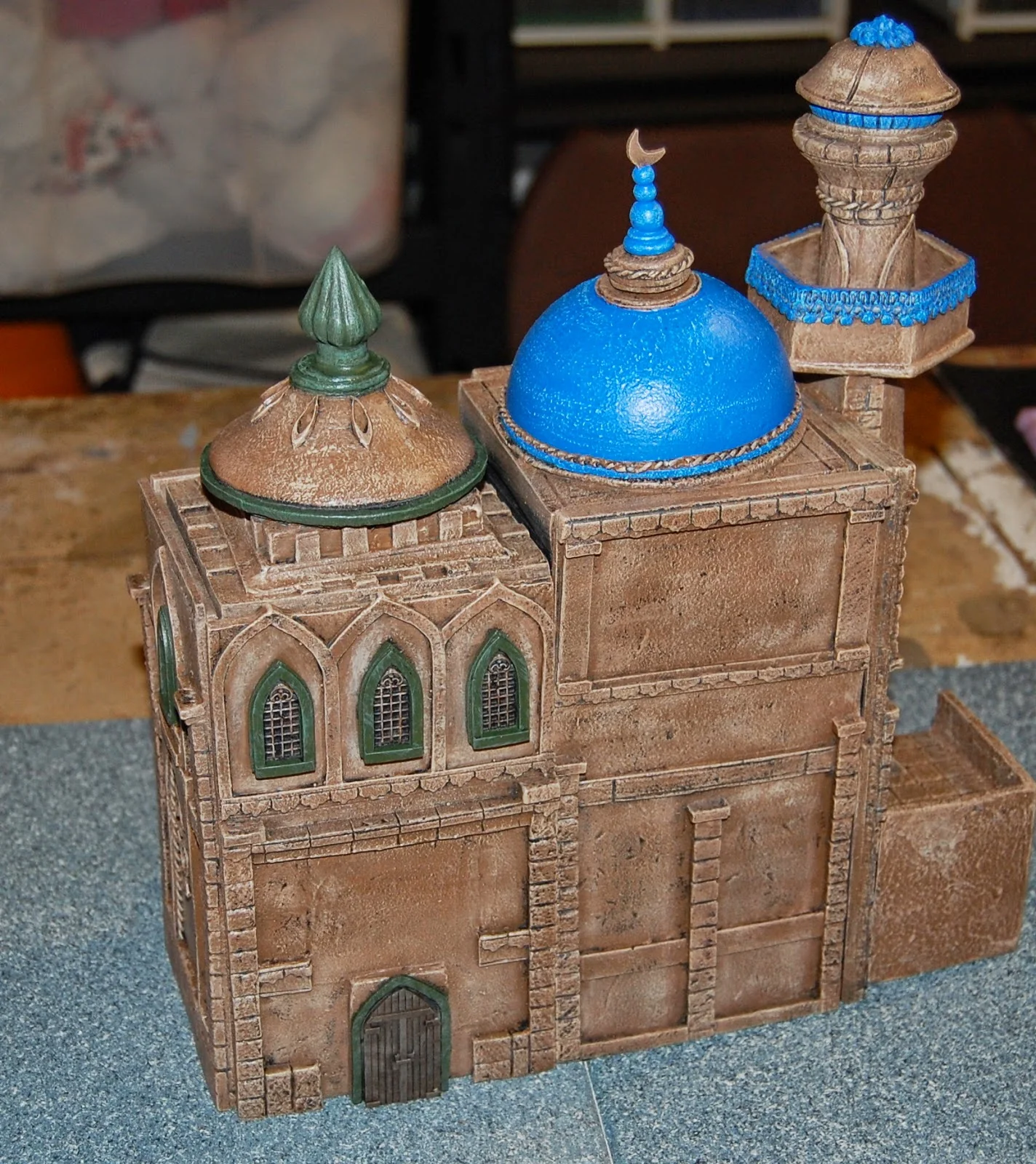At the inlet the second wave approaches but the FO for the Artillery gets through on their phone AND successfully calls down a barrage that engulfs one of the landing craft. Heavy casualties result!
The struggle is still intense on Beach Sabak, and no bunkers have yet to fall:
Indians suffer 9 casualties while the Japanese lose none!
0700-0900 Hrs, Turns 8-10;
On Beach Badung, second wave has broken through and has reached the second line wire (upper left) but the Indian 18lber places a shot into another landing craft:
At the Inlet, the third wave is overwhelming the defenders:
At Beach Sabak, newly arriving Japanese press hard against the defenders:
As the sun begins to light up the field, the first Japanese planes (Neils) arrive to bomb the RAF station, but there is little damage. One of the Buffaloes has just taken off while the other prepares. Fortunately the just landed Beaufort which took photos at Singora escapes attention. The photos must make it back to Singapore! (That's Dogra Btn HQ left-center)
Losses on both sides are mounting: Japanese lose 41 more with the Indians suffering 33!
Blenheims and additional Hudsons arrive from Alor Star and Singapore, and immediately make themselves felt, scoring strikes on two additional landing craft! The second wave here has been decimated!
Japanese Oscars and Zeros make their appearance, and several bombers are badly hit:
1000 Hrs, Turn 11:
At Beach Badung, there are only four brave Dogras holding the second trench line...and a Japanese volley takes them all! (Notice an NCO from Co HQ to the right of trench making a reconnaissance. He has just witnessed the last line nearly destroyed!)
Only the extreme right-hand bunker (and the faithful 18lber) still resisits on Badung beach. x2 MMG (one marked with Unionjack to right of Bandung and tsecond to the left of said village), are trying to buy Co HQ (in Badung, near truck) to withdraw and call up reserves:
At the Inlet, the last few Dogra defenders go down under a third wave of Japanese:
At Beach Sabak, the first bunker falls:
Losses: Japanese 3, Indians 16. The end is near
1100 Hrs, Turn 11:
Near Badung, Japanese have now penetrated the last wire and have inflicted casualties on the last remaining Dogras (MMG). HQ is pulling back but they were able to contact Btn HQ and the Frontier Force (2nd Sikh) are on their way:
And at the Inlet, nearly a full company of Japanese are moving inland towards the airstrip:
At this point the game was called. Two companies from the Frontier Force Btn had arrived, but at least two Japanese cos were at or near Badung and so it was agreed that history would play out itself and the counterattack would fail to retake the beaches. (A third Japanese co was just clearing Beach Sabak as well) Overall it turned out to be a great game which mirrored in many ways what happened that fateful morning: Final casualties (now accounting for lightly wounded and men who had 'stopped fighting") were Japanese: 64KIA and 51WIA; Indians: 66 (all were presumed KIA) with five bunkers lost. The club is going to replay the battle (minus aircraft and ships) this Wednesday, and then it's on to Tacticon, Aug 29, in Denver, at the Radisson Hotel. If you're in town, stop by.































































